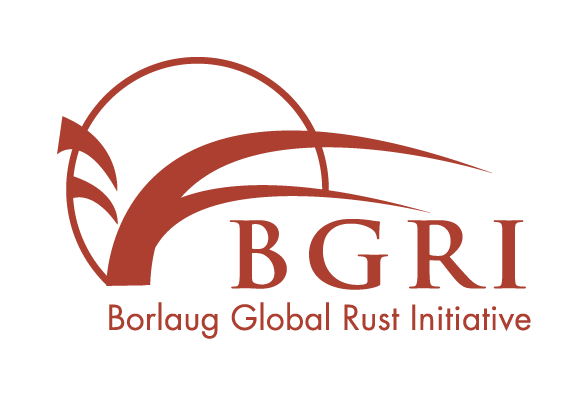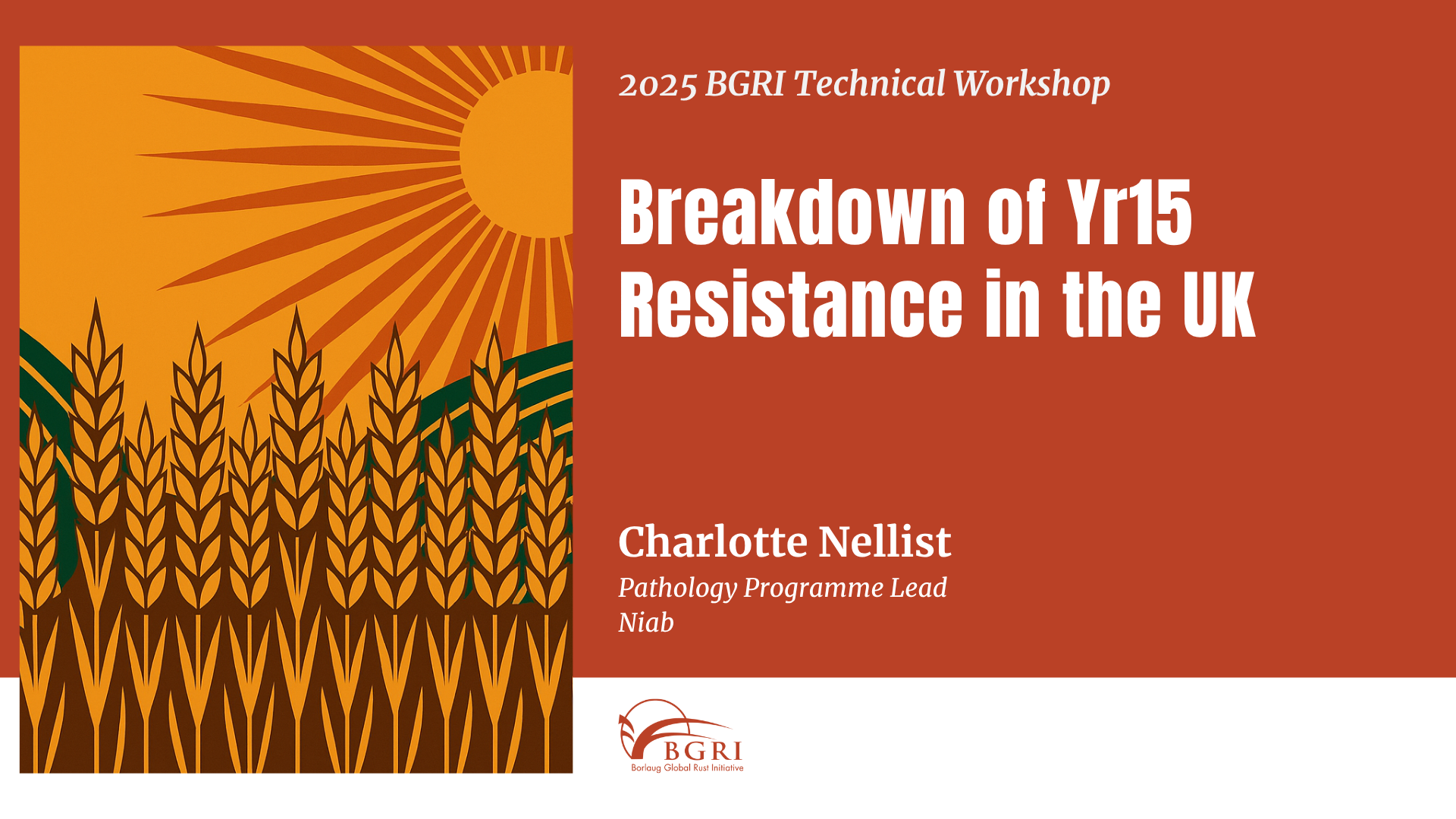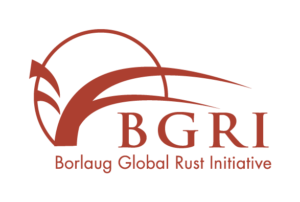A critical line of disease defense in the world’s wheat crop is beginning to fail. Yellow rust, a fast-moving fungal disease that threatens wheat production worldwide, has evolved to overcome one of the most widely used genetic protections in modern European wheat varieties, triggering concern across the United Kingdom and continental Europe.
The warning was presented at the 2025 Borlaug Global Rust Initiative (BGRI) Technical Workshop in Vancouver, where researchers from around the world gathered to share updates on rust pathogen monitoring, wheat breeding and response efforts. Charlotte Nellist, a plant pathologist at Niab in the United Kingdom, reported an unprecedented pattern of infections in wheat varieties previously rated as highly resistant to yellow rust, identified through the United Kingdom Pathogen Virulence Survey (UKCPVS).
At the center of the outbreak is a resistance gene known as Yr15, which has been used by plant breeders in Europe for decades to help wheat fend off yellow rust. Originally identified in a wild wheat relative, Yr15 was introduced into commercial breeding programs in the 1990s. It has since become a cornerstone of wheat protection because it offered broad reliable resistance across many climates and wheat-growing regions.
In the UK, where early signs of trouble emerged in untreated plots this spring, the impact is already evident, with some varieties showing susceptibility at the seedling and adult plant stage. According to Niab, nearly 50% of the national wheat area is planted with varieties carrying the Yr15 resistance gene—including many of the country’s most widely grown cultivars.

Yellow rust on an untreated plot of the Yr15 variety Mayflower. Credit: Niab
Kostya Kanyuka, head of Niab Plant Pathology and the UKCPVS project lead, said that those same varieties are showing widespread yellow rust infections, signaling a major breakdown in what was once considered reliable genetic protection. Some varieties may retain protection through additional resistance genes, but Yr15 has long been a cornerstone of the UK’s rust management strategy.
“This is a classic example of the arms race between crops and pathogens,” said Nellist, who presented the findings at the 2025 BGRI Technical Workshop in Vancouver. “And this time, the fungus has gained ground.”
What began as a cluster of unexpected infections in northern England has since expanded. Scientists at the Global Rust Reference Center (GRRC) in Denmark have confirmed similar outbreaks in northern and central parts of Europe. Sentinel plots and commercial fields in France, Belgium, Denmark, Sweden, the Netherlands, and the Czech Republic have all reported yellow rust infections on wheat cultivars known to carry Yr15.
Until this year, virulence against Yr15 had been an extraordinary rarity—documented only twice in more than two decades of global pathogen surveillance. The rise of a more virulent yellow rust strain capable of bypassing one of wheat’s key resistance genes is undermining its effectiveness in rust control in fields across several countries.
“This could be the most significant breakdown of yellow rust resistance in Europe for a long time,” said Mogens Hovmøller, professor of plant pathology at Aarhus University and head of the GRRC. “Until now, we have only detected virulence to Yr15 in two samples of a single race, more than 20 years ago when the European rust population was very different, and never among samples received by GRRC from all over the world since 2009. The fact that we’re now seeing Yr15-virulence emerge in multiple countries within a few weeks stress the epidemic power of the yellow rust disease, in particular when the pathogen has become adapted to widely deployed wheat cultivars. It raises immediate concerns about the durability of yellow rust resistance in Europe, and highlights the importance of ongoing rust surveillance efforts coupled with intensified breeding to broaden the genetic diversity for rust resistance in European wheats.”
Yellow rust, also known as stripe rust, is a highly transmissible fungal disease that attacks the leaves of wheat plants, reducing their ability to photosynthesize and produce grain. It spreads by windborne spores and thrives in cool, damp weather. In severe outbreaks, wheat yields can be reduced by more than 70%. Globally, yellow rust is responsible for over $1 billion in crop losses each year. Nearly 90% of the world’s wheat-growing areas are considered vulnerable.
Wheat is grown on more land than any other food crop and provides about 20% of the world’s calories and protein. More than a billion people rely on wheat for food and income, making any large-scale disruption to its production a serious threat to food security.
“This is not just a problem for researchers or farmers in one country—it’s a global food and economic security issue,” said Maricelis Acevedo, director for science at the BGRI and a research professor in the School of Integrative Plant Science at Cornell University’s College of Agriculture and Life Sciences. “What we’re seeing with the breakdown of Yr15 is a reminder that pathogens continue to adapt to the wheat varieties grown by farmers and don’t respect borders. It reinforces why long-term, international collaboration is essential.”
Founded in 2005, the BGRI was established to respond to the threat of wheat rust diseases through coordinated global research, pathogen surveillance and wheat breeding. The initiative brings together pathologists and wheat breeders to track emerging rust strains, share data and develop wheat varieties with more durable resistance. Through partnerships with institutions around the world, the BGRI has helped countries prepare for and respond to rust outbreaks before they spiral into full-blown epidemics.
“This is exactly why a global wheat research community is necessary,” Acevedo said. “Over the past 20 years the BGRI and partner organizations working together have been connecting the dots between field observations, lab and greenhouse pathotyping, and pathogen-informed breeding strategies to support policy decisions around the world. On-time dissemination of accurate information of pathogen evolution and shifts is essential to safeguard wheat production globally.”
The latest findings have sparked urgent calls for action from researchers and breeders alike. The Horizon Europe–funded IPMorama project has deployed more than 80 sentinel plots across Europe to monitor the spread of wheat rust. This has allowed scientists to map the spread of Yr15-virulence and genotype the virulent yellow rust strains few weeks after first detection and evaluate their ability to overcome other resistance genes as well.
In the UK, the widespread use of Yr15 in varieties like KWS Dawsum, LG Typhoon, and Champion—until now considered some of the most rust-resistant options available—has raised immediate questions about next steps for growers and seed developers.
“This is not yet a full-blown crisis as some commercial varieties in the UK and Europe appear to be less affected by the new strain and probably contain additional minor resistance genes and/or adult plant resistance gene(s), and yellow rust can still effectively be managed by azole fungicides,” Kanyuka said, “but it is a wake-up call. The disease has changed—and now we have to change, too.”
For questions or more information, contact bgri@cornell.edu.






